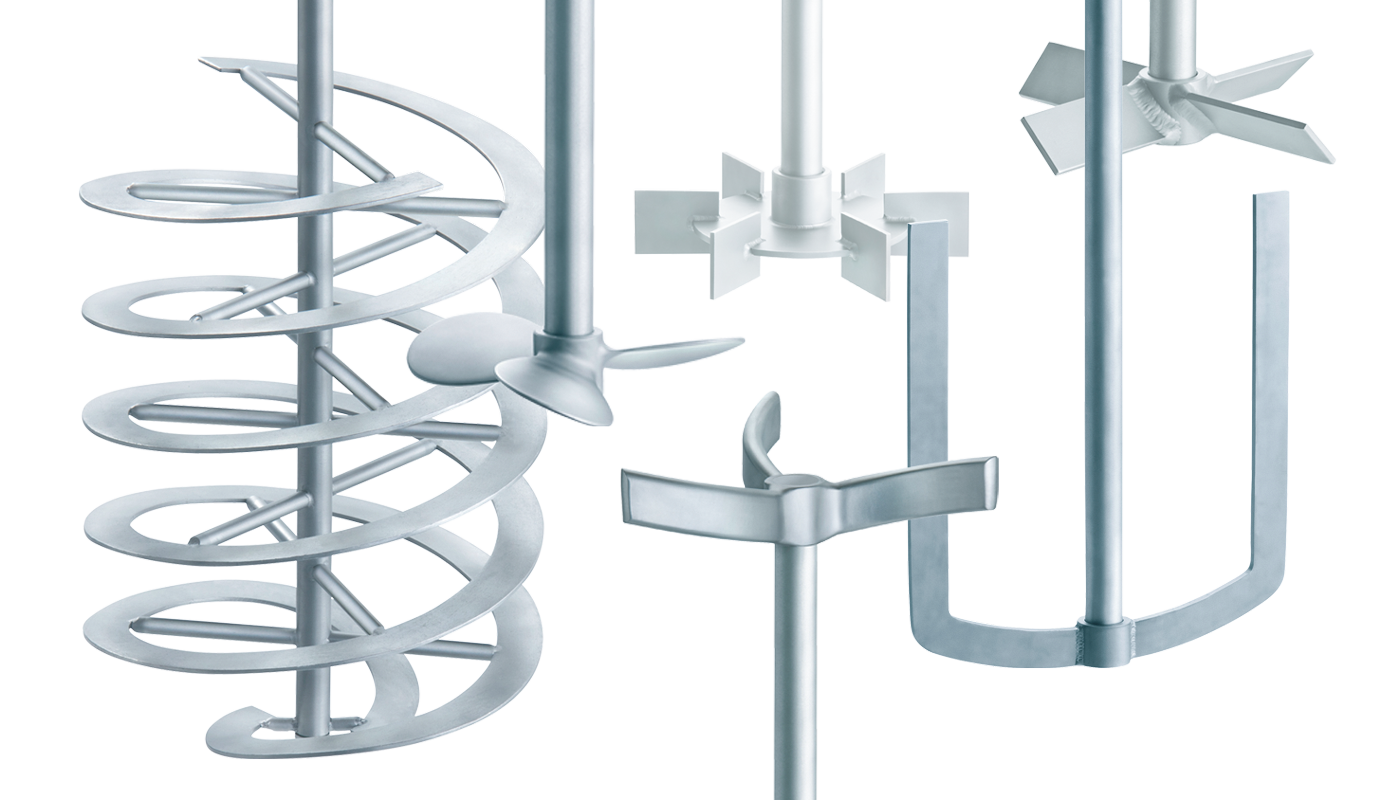
Conventional Impellers
For Axial, Radial and Tangential Flow
In principle, it is useful to categorize agitators according to the following aspects
- Primary flow direction: axial, radial or tangential
- Close to the wall and central operating impellers
- Tip speed
- Viscosity range or flow regime: laminar, turbulent or transitional
In practice, impellers are usually classified according to the primary flow direction. In addition to the desired axial or radial flow, each agitator also generates a tangential flow through the transmission of the rotary movement to the liquid. A three-dimensional flow thus prevails in a mixing vessel. This flow field is strongly influenced by components in the container. Undesired tangential flow in the stirring system can often be reduced by the installation of baffles on the vessel wall.
Axial Flow Impellers
Propeller

Pitch blade turbines

Helical ribbon impellers

Radial Flow Impellers
Rushton disc turbine

Retreat curve impellers

Tangential Flow Impellers
Anchor impeller





